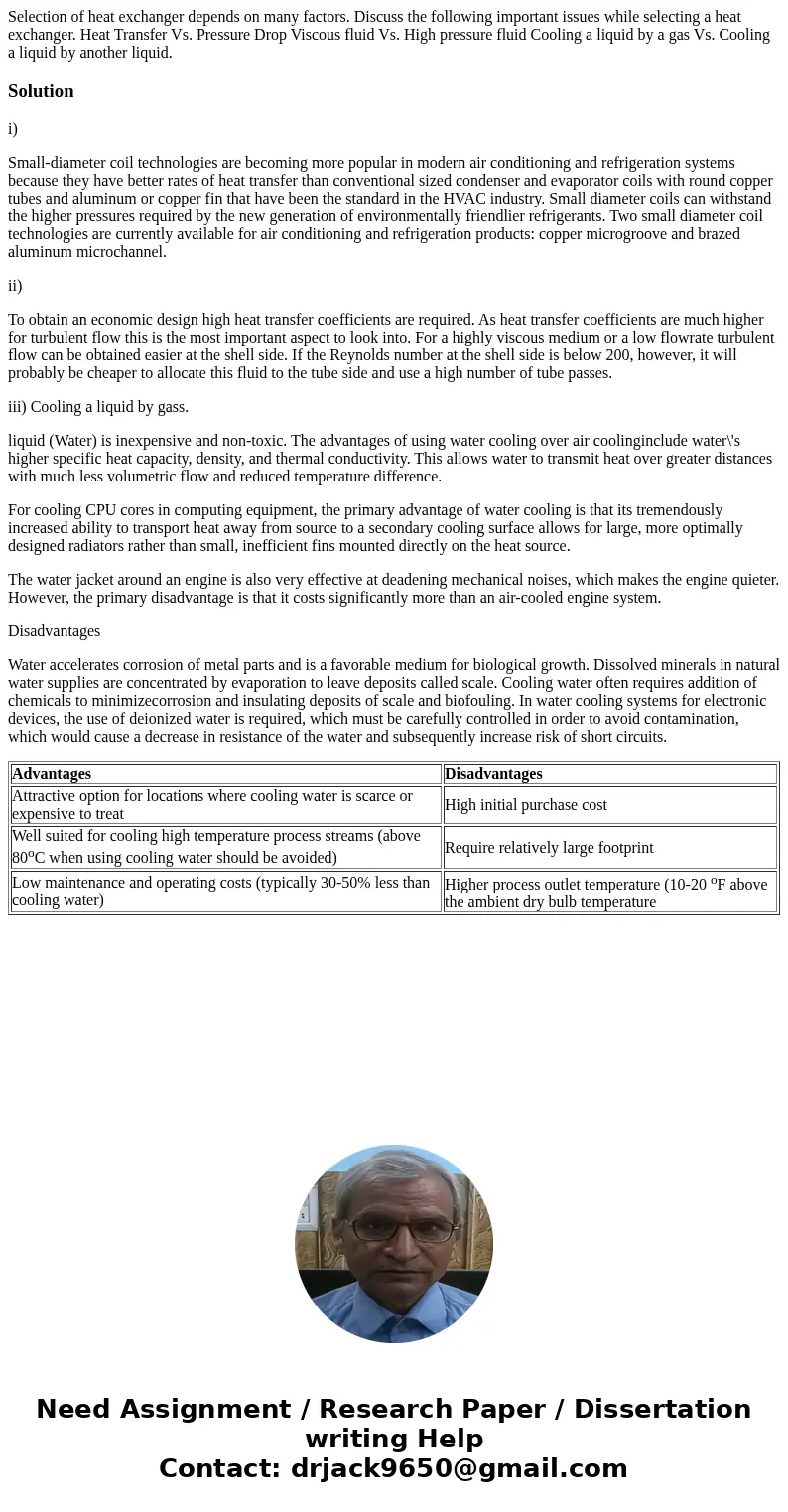Selection of heat exchanger depends on many factors Discuss
Solution
i)
Small-diameter coil technologies are becoming more popular in modern air conditioning and refrigeration systems because they have better rates of heat transfer than conventional sized condenser and evaporator coils with round copper tubes and aluminum or copper fin that have been the standard in the HVAC industry. Small diameter coils can withstand the higher pressures required by the new generation of environmentally friendlier refrigerants. Two small diameter coil technologies are currently available for air conditioning and refrigeration products: copper microgroove and brazed aluminum microchannel.
ii)
To obtain an economic design high heat transfer coefficients are required. As heat transfer coefficients are much higher for turbulent flow this is the most important aspect to look into. For a highly viscous medium or a low flowrate turbulent flow can be obtained easier at the shell side. If the Reynolds number at the shell side is below 200, however, it will probably be cheaper to allocate this fluid to the tube side and use a high number of tube passes.
iii) Cooling a liquid by gass.
liquid (Water) is inexpensive and non-toxic. The advantages of using water cooling over air coolinginclude water\'s higher specific heat capacity, density, and thermal conductivity. This allows water to transmit heat over greater distances with much less volumetric flow and reduced temperature difference.
For cooling CPU cores in computing equipment, the primary advantage of water cooling is that its tremendously increased ability to transport heat away from source to a secondary cooling surface allows for large, more optimally designed radiators rather than small, inefficient fins mounted directly on the heat source.
The water jacket around an engine is also very effective at deadening mechanical noises, which makes the engine quieter. However, the primary disadvantage is that it costs significantly more than an air-cooled engine system.
Disadvantages
Water accelerates corrosion of metal parts and is a favorable medium for biological growth. Dissolved minerals in natural water supplies are concentrated by evaporation to leave deposits called scale. Cooling water often requires addition of chemicals to minimizecorrosion and insulating deposits of scale and biofouling. In water cooling systems for electronic devices, the use of deionized water is required, which must be carefully controlled in order to avoid contamination, which would cause a decrease in resistance of the water and subsequently increase risk of short circuits.
| Advantages | Disadvantages |
| Attractive option for locations where cooling water is scarce or expensive to treat | High initial purchase cost |
| Well suited for cooling high temperature process streams (above 80oC when using cooling water should be avoided) | Require relatively large footprint |
| Low maintenance and operating costs (typically 30-50% less than cooling water) | Higher process outlet temperature (10-20 oF above the ambient dry bulb temperature |

 Homework Sourse
Homework Sourse